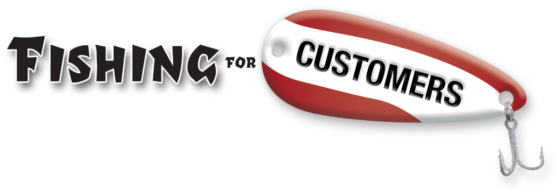There tend to be two schools of marketing. The creative and the scientific.
Imagination and mathematics.
Right brain, left brain.
At least, it looks that way on the surface.
Marketing Yin & Yang
Some highly effective marketing uses evocative imagery.
“Melts in your mouth,”
“Cleans like a white tornado,”
or “Where’s the beef?”
Some is a bit less exciting.
“click here to learn more,”
“save 13 cents on your next purchase,”
“Dear Fellow nature lover.”
But truly effective marketing uses both. First the math. Then the imagination. First the who, and what. Then the how and why. And that makes sense, doesn’t it?
A marketer identifies the target market, measures responses, and calculates ROI. Then he provides the creative team with very specific direction: “Here’s what we know about the prospect, what we believe to be her motivation, and the offer we’re going to present.
The creative folks, the copywriters and art directors, focus on that customer profile. They detail our prospect’s life. They account for her time, her activities, and her choices. They find correlations in her other purchases.
And then they create “We are Farmers, dum te dum dum dum dum dum,” or “What it feels like to chew 5 gum.”
But it always starts with detailing, and measuring the buying process.
Tread Wears, “Blowout Worry” Accumulates
Eventually, the tread wears down on every tire, and every automobile requires replacement tires.
In most cases the wear happens gradually.
An early stage buyer notes that wear is accumulating on her tires. She’ll file that observation away into her subconscious as something that will need attention sometime in the future.
Her subconscious will, through reticular activation, allow tire ads to pass the mental filter which helps her to tune out the thousands of advertising impressions she’s subjected to each day.
What Runs Through The Shopper’s Mind?
At minimum (“Humm. Tires are showing slight signs of wear.”) she knows she can put off the purchase decision. Not feeling any pressure to buy, but aware that it will eventually become necessary, those lower price offerings from Mr. Tire Store Owner will appear more attractive and better hold her attention.
As the tread continues wearing, she’ll think less about price, and worry more about safety. As you might expect, the closer she gets to “OK… I’m scared to drive any farther on these tires,” the less price acts as the primary motivator.
Then there are those cases in which the tire catastrophically fails. When that happens, she will make a purchase. Probably today.
Purchase Trigger
It may be growing worry. It may be performance failure. It may be because she’s leaving in a week to drive across three states on her family’s vacation. It may be that she came across an unexpected tire sale. It may be an unexpected salary bonus. But something will happen that causes the owner of that car to decide it’s time for new tires.
We call that event a purchase trigger.
A trigger is a change in perception on the part of the shopper. Its the realization that the actual discomfort of NOT owning has become greater than the perceived discomfort in making the purchase.
Triggers happen to different shoppers at different times, but all shoppers experience similar triggers.
That’s the fact which allows us to design customer acquisition programs.
Once we determine a strong appeal to an early stage shopper (say… reduced price), that appeal will be equally attractive to a different early stage shopper next month. Yet another completely different early stage shoper will be attracted with that same appeal the month after that.
Likewise, the appeal which works to attract this month’s late stage shoppers (perhaps safety, or guilt about safety) will work with other late stage shoppers later this year.
And when our primary appeal meets with a prospect’s strongly felt need, it acts as a trigger, moving that prospect to the next step, perhaps all the way to completing the purchase.
What Steps does the Shopper Take?
The specific shopping steps will be slightly different for every business. Some purchases are made on a whim. Others require research and the approval of a committee. Some buyers initiate purchase orders. Others simply pay cash.
Our tire shopping prospect likely goes through nine separate steps to buy tires.
The Sales Process is Always Similar, but Never the Same
So far, we’ve described the buying process, which begins with the shopper feeling a need. Is the selling process the same?
Usually, its not.
The selling process begins when the seller identifies the buyer as a new prospect, and attempts to get her to engage.
And other than advertising, the seller has no control over communication with the prospect until she identifies herself.
In our tire purchase example the buyer has already taken five independent steps before the seller knows she exists.
But detailing the customer’s steps between the first interaction with the seller, and the completion of the purchase, are what allow us to standardize the process. It’s what allows us to set our marketing on “Cruise Control,” when we’re fishing for customers.
Your Guide,
Chuck McKay
 Your Fishing for Customers guide, Chuck McKay, gets people to buy more of what you sell.
Your Fishing for Customers guide, Chuck McKay, gets people to buy more of what you sell.
Got questions about detailing your customer’s shopping process? Drop Chuck a note at ChuckMcKay@ChuckMcKayOnLine.com. Or call him at 304-208-7654.



